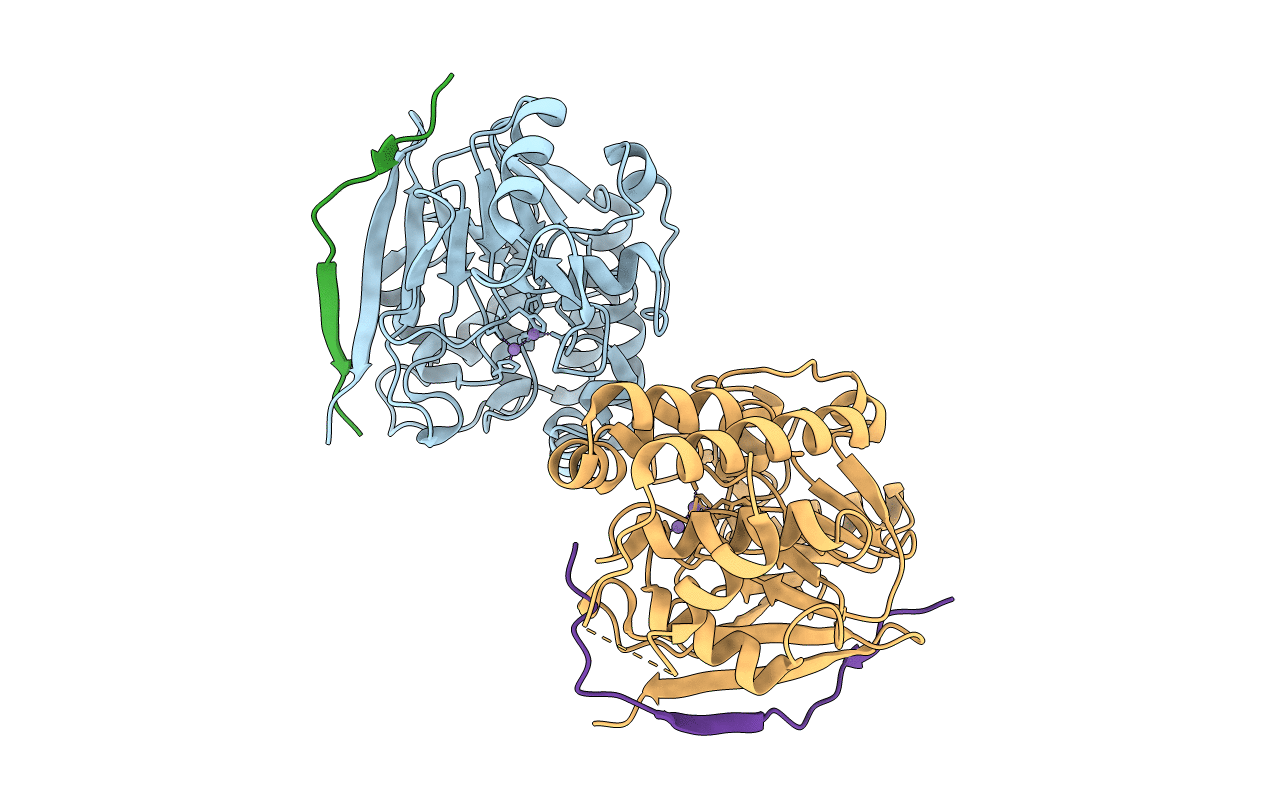
Deposition Date
2014-09-18
Release Date
2015-03-25
Last Version Date
2024-05-01
Entry Detail
PDB ID:
4V0W
Keywords:
Title:
The crystal structure of mouse PP1G in complex with truncated human PPP1R15B (631-669)
Biological Source:
Source Organism:
MUS MUSCULUS (Taxon ID: 10090)
HOMO SAPIENS (Taxon ID: 9606)
HOMO SAPIENS (Taxon ID: 9606)
Host Organism:
Method Details:
Experimental Method:
Resolution:
1.55 Å
R-Value Free:
0.20
R-Value Work:
0.17
R-Value Observed:
0.17
Space Group:
P 21 21 21


